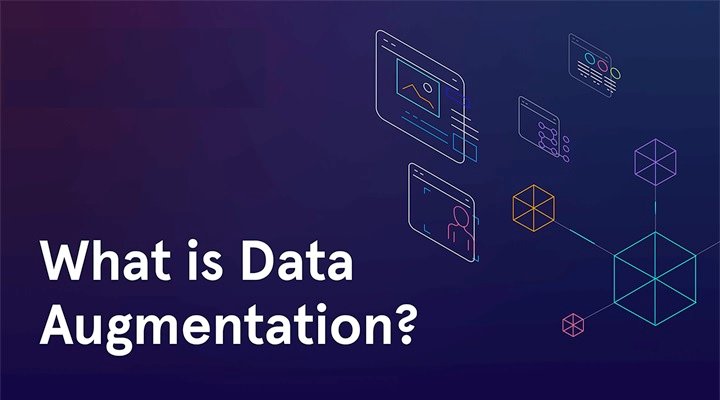Table of Contents
Introduction
Imagine you’re training a puppy to recognize a ball. You show it a red ball, a blue ball, a beach ball – all sorts of balls. But what happens if you only show it a single, slightly deflated red ball? Chances are, it’ll struggle to identify a perfectly round, yellow beach ball at the park. This is a simplified example of what can happen in machine learning with data overfitting.
Data overfitting is when your AI model gets too hung up on the specific details of your training data, making it bad at generalizing to new situations. That’s where data augmentation comes in – it’s like giving your AI puppy a whole box of different balls to play with!
So, what exactly is Data Augmentation?
Data augmentation is essentially creating new training data from your existing data. Instead of going out and collecting a whole bunch of new images, you apply different techniques to modify your existing ones. Let’s take image recognition as an example. Here are some common data augmentation techniques:
- Rotation: Rotate your images by a few degrees.
- Flipping: Flip your images horizontally or vertically. Think of showing your puppy the ball from different angles.
- Cropping: Take slightly different cropped sections of your images. This helps the model recognize the object regardless of its position in the frame.
- Color jittering: Slightly adjust the brightness, contrast, or saturation of your images. This helps the model recognize the object under different lighting conditions.
By applying these techniques, you can create a much larger and more diverse dataset for your AI model to train on. This helps the model become more robust and generalize better to unseen data.
Why is Data Augmentation so important?
There are two main reasons why data augmentation is becoming increasingly important in AI:
- Cost of data collection: Building a high-quality dataset can be expensive and time-consuming. Data augmentation allows you to get more mileage out of the data you already have.
- The rise of Alternative AI Training Datasets: As AI continues to evolve, there’s a growing need for alternative ways to train models. Data augmentation is one piece of this puzzle, alongside techniques like synthetic data generation (think creating entirely new, realistic images using code).
Real-world examples of Data Augmentation
Data augmentation isn’t just some theoretical concept. It’s being used in all sorts of real-world applications:
- Self-driving cars: Data augmentation is used to create more diverse images of traffic situations, helping self-driving cars recognize objects and navigate different conditions.
- Medical diagnosis: By augmenting medical images (like X-rays), AI models can be trained to detect diseases with greater accuracy.
- Face recognition: Augmenting facial images with different expressions and lighting conditions helps facial recognition systems become more robust.
Data augmentation is a powerful tool that can help you train better AI models, even with limited resources. So, the next time you’re working on an AI project, consider giving your data a little augmentation boost!

Frequently Asked Questions About Data Augmentation
Why use data augmentation in CNNs?
CNNs are data-hungry beasts! The more high-quality training data they have, the better they perform. But collecting massive datasets can be expensive and time-consuming. Data augmentation comes to the rescue by artificially expanding your dataset. It creates new variations of your existing data, essentially “tricking” the CNN into thinking it has a much larger dataset to learn from.
What is augmentation with an example?
Imagine you’re training a CNN to recognize dogs. Data augmentation could randomly flip the image horizontally (mirroring the dog), rotate it slightly, or adjust its brightness. These variations help the CNN learn the core features of a dog regardless of its orientation or lighting conditions.
What’s the difference between data augmentation and preprocessing?
Both data augmentation and preprocessing prepare your data for training. Preprocessing typically involves normalizing data values or resizing images to a standard format. Data augmentation, on the other hand, specifically creates new variations of your existing data to improve the model’s generalization capabilities.
What’s the objective of data augmentation?
Data augmentation aims to achieve two main goals:
- Reduce overfitting: By training on a wider variety of data, the CNN is less likely to memorize specific patterns in the training set and perform poorly on unseen data.
- Improve robustness: Data augmentation helps the CNN learn features that are invariant to minor changes like rotation or brightness, making it more robust to real-world variations.
Data augmentation techniques?
Here are some common data augmentation techniques for images:
- Geometric transformations: Flipping, rotating, scaling, shearing.
- Color space augmentations: Adjusting brightness, contrast, saturation.
- Random cropping: Taking random sub-regions of the image.
Data augmentation in machine learning (ML)?
While data augmentation is particularly beneficial for CNNs in computer vision, the concept can be applied to other machine learning tasks as well. For example, in text classification, you might add synonyms or slightly modify the wording of sentences to create variations.
Popular frameworks and data augmentation?
- Keras: Offers built-in functions for data augmentation.
- PyTorch: Provides libraries like Torchvision for data augmentation.
- TensorFlow: TensorFlow has its own data augmentation functionalities (e.g., tf.keras.layers.DataAugmentation).
Data augmentation example and code?
Finding specific code examples depends on your chosen framework. However, searching online for “[your framework] data augmentation tutorial” should provide you with plenty of resources and code snippets to get started!




1 Pingback